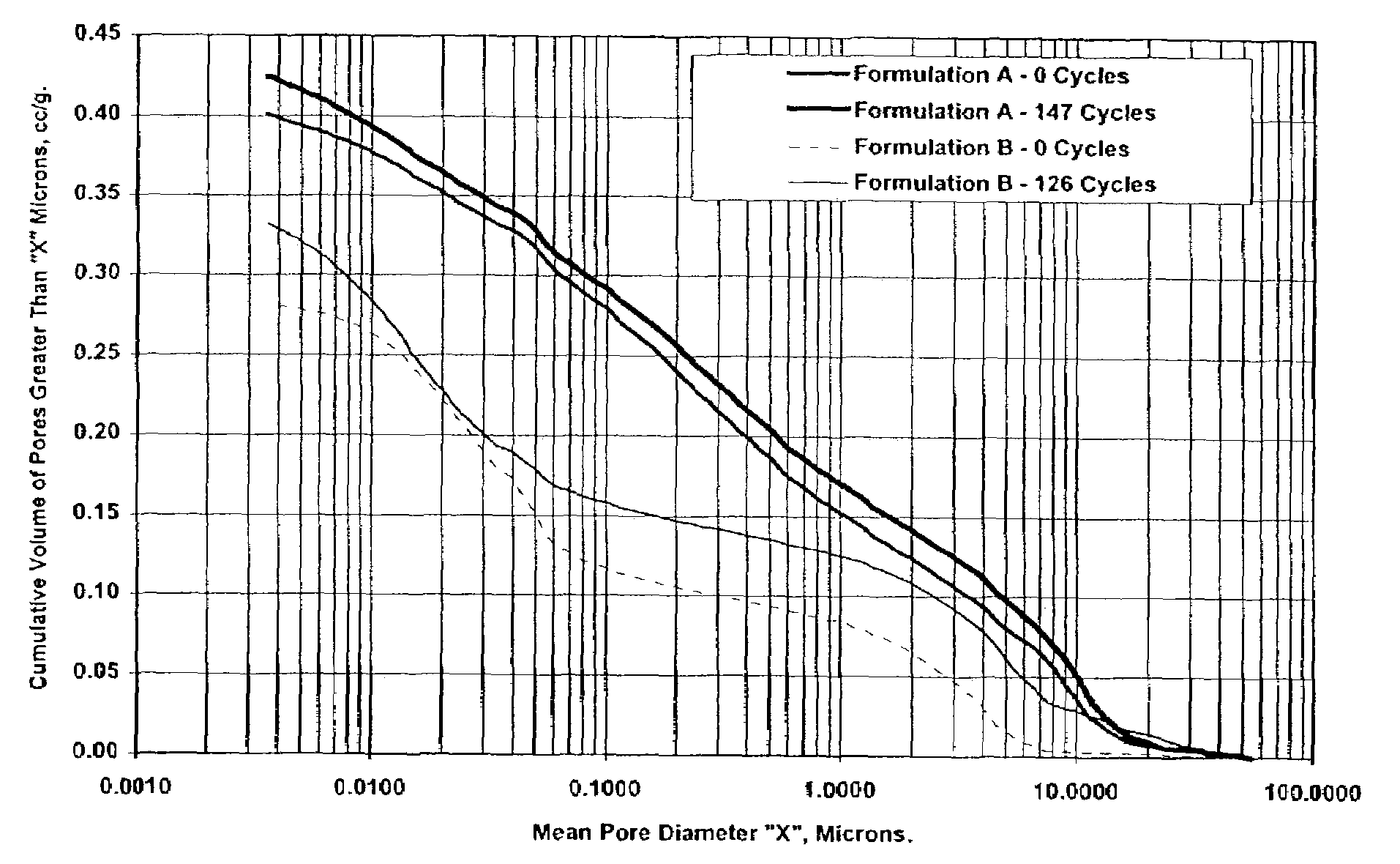Fiber cement building materials with low density additives
a fiber cement and additive technology, applied in the field of fiber cement building materials with low density additives, can solve the problems of reducing workability, less wet to dry dimensional stability of materials, and more difficult cutting, machine and nailing of fiber cement building products than in timber and timber based products, so as to improve workability and improve dimensional stability. stability, the effect of improving the density
- Summary
- Abstract
- Description
- Claims
- Application Information
AI Technical Summary
Benefits of technology
Problems solved by technology
Method used
Image
Examples
first embodiment
1. Volcanic Ash
[0023]In a first embodiment, this invention relates to the addition of volcanic ash into cementitious cellulose fiber reinforced building materials. Volcanic ash is also commonly referred to as “airborne perlite”, “pumice” or “pumicsite”. Volcanic ash is typically a natural glass derived from the magma of volcanoes during an eruption. Volcanic ash is a relatively lightweight sand sediment formed by the cooling of high temperature magma, giving rise to a material comprising about 30 wt. % crystalline minerals and 70 wt. % amorphous volcanic ash glass. It has a typical bulk density of about 25-75 lbs. / cu.ft. Usually this volcanic ash is expanded with the introduction of heat to change the morphology and achieve a lighter material with a typical bulk density ranging from about 2-25 lbs. / cu.ft. Expanded volcanic ash can have a wide range of particle sizes from less than about 10 microns up to about 425 microns, with median particles sizes ranging between about 20 to 100 m...
second embodiment
2. Hollow Ceramic Microspheres
[0053]A second embodiment of this invention encompasses the addition of hollow ceramic microspheres into cementitious cellulose fiber-reinforced building materials. This second embodiment with hollow ceramic microspheres may be preferred over the first embodiment including volcanic ash because the addition of microspheres in FRC materials has even better moisture resistance coupled with other durability advantages, including freeze-thaw resistance, and thermal dimensional stability. It will be appreciated that the preferred embodiments for the second embodiment are not limited to these types of microspheres or building materials. Thus, other types of fillers and building materials are also contemplated.
[0054]Microspheres can be natural, synthetic or a by-product. The material can be crystalline but is more typically amorphous or glass. One preferred type of microspheres are hollow ceramic microspheres commonly known as cenospheres. Cenospheres are a coa...
third embodiment
3. Microspheres and Other Additives
[0091]A third embodiment of this invention relates to the addition of hollow ceramic microspheres in combination with volcanic ash and / or other low density additives in cementitious cellulose fiber-reinforced building materials. Descriptions of volcanic ash and hollow ceramic microspheres are found in the detailed descriptions of the first and second embodiments, respectively. The third embodiment with a blend of microspheres and low density additives may be more preferable than the first embodiment with VA given FRC products can achieve a lower range of densities with improved moisture resistance and durability properties. However, the second embodiment with the independent addition of microspheres may be preferable to this third embodiment because of the superlative durability properties offered by the independent addition of microspheres. The preference of the second embodiment to the third embodiment is dependent on the relative importance of d...
PUM
| Property | Measurement | Unit |
|---|---|---|
| density | aaaaa | aaaaa |
| density | aaaaa | aaaaa |
| density | aaaaa | aaaaa |
Abstract
Description
Claims
Application Information
 Login to View More
Login to View More - R&D
- Intellectual Property
- Life Sciences
- Materials
- Tech Scout
- Unparalleled Data Quality
- Higher Quality Content
- 60% Fewer Hallucinations
Browse by: Latest US Patents, China's latest patents, Technical Efficacy Thesaurus, Application Domain, Technology Topic, Popular Technical Reports.
© 2025 PatSnap. All rights reserved.Legal|Privacy policy|Modern Slavery Act Transparency Statement|Sitemap|About US| Contact US: help@patsnap.com



